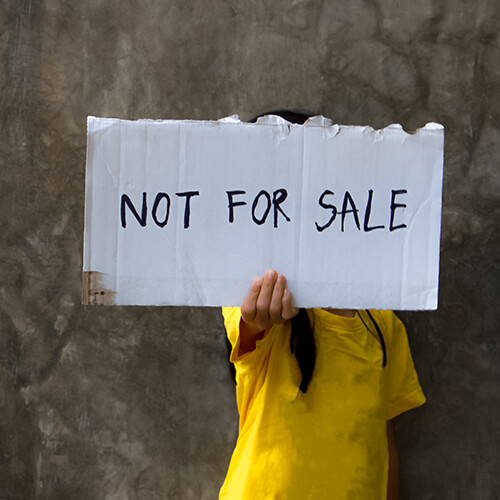Definitions, Types, and Trends
Human trafficking is a severe violation of human rights and an extensive criminal industry, second only to drug trafficking as the world's largest criminal enterprise.
What is Human Trafficking?
The Trafficking Victims Protection Act of 2000 defines human trafficking as the recruitment, harboring, transportation, provision, or obtaining of a person for labor or services through the use of force, fraud, or coercion for the purpose of subjection to involuntary servitude, peonage, debt bondage, or slavery.

Types of Human Trafficking
Human trafficking is primarily divided into labor trafficking and sex trafficking, although familial trafficking, where family members exploit a relative, is very significant.
Labor trafficking involves forcing victims to work in industries such as agriculture, domestic work, restaurants, cleaning services, and factories. Victims are often lured with false promises of good jobs and better lives but end up trapped in exploitative situations through force, fraud, or coercion. They may have their documents confiscated, face threats of deportation, and be forced to work long hours for little or no pay. Industries like construction, agriculture, and domestic work are particularly vulnerable to labor trafficking.
More Information:
Sex trafficking is the exploitation of adults and minors for commercial sex acts through force, fraud, or coercion. Victims may be recruited through false job offers or by intimate partners who turn into traffickers. They are often subjected to physical and psychological abuse to maintain control. While exact numbers are difficult to determine, over 10,000 human trafficking cases were reported to the National Human Trafficking Hotline in 2020, with sex trafficking accounting for over 7,600 of those cases.
More Information:
Familial trafficking is a serious and underreported form of child exploitation in the United States. It involves the exploitation of a minor within their own family for goods, substances, services, or money. Children are often coerced, groomed, or manipulated into sexual acts, either online or in person, often for financial gain. An estimated 200,000 American children are sexually exploited annually, with 90% of commercial sexual exploitation starting within victims' own homes.
More Information:
A social service provider highlighted an alarming statistic that approximately 90% of human trafficking cases involve someone the victim knows. It's rarely the commonly depicted stranger in the white van.
Challenges in Identifying Human Trafficking
Identifying human trafficking cases in the United States presents numerous challenges across various forms of exploitation, including labor, sex, and familial trafficking.
- Covert Crimes: The hidden and secretive nature of trafficking makes it hard to detect as victims are often isolated from the public and controlled by their traffickers.
- Barriers for Victims: Victims, particularly those from other countries, may not know their rights or may avoid law enforcement due to fears related to their immigration status.
- Misidentification: Victims of labor trafficking can appear to be merely working under poor conditions, making it tough to pinpoint trafficking situations. In sex trafficking, victims are often mistakenly seen as willing participants in prostitution.
- Lack of Training and Resources: Many law enforcement personnel and service providers don't have the necessary training to spot signs of trafficking, especially in cases involving family members. Additionally, limited resources restrict thorough investigations and outreach efforts.
Current Trends

Human trafficking is happening in all 50 states, including wealthy and affluent areas. While trafficking does not discriminate by socioeconomic status, gender, or other demographics, LGBTQ individuals and males are being increasingly targeted as victims.
Many cases reveal that trafficking is increasingly facilitated through digital platforms, where traffickers target victims and connect with buyers anonymously. Social media has become a prominent tool for recruitment, especially among minors and other vulnerable populations, amplifying the reach and invisibility of traffickers. Communication and recruitment through illicit message boards and gaming are also trending.
Recruitment often involves sextortion, when the perpetrator threatens to distribute private and sensitive material if the victim doesn't provide images of a sexual nature, sexual favors, or money.
Remote trafficking (control from across state lines) and cashless transactions (i.e., cash apps, Venmo, etc.) are becoming more common.
Illicit massage parlors are a growing issue in human trafficking. Disguised as legitimate businesses, this type of crime can be difficult to identify.
Human trafficking activity spikes around major, large-scale events, including athletic and political events.
Support and resources for survivors are inadequate. This can be a barrier for those wishing to or attempting escape. It can also cause them to re-enter trafficking activity.
Awareness and prosecution of human trafficking is increasing.
- In recent years, human trafficking has shown concerning trends in the United States, affecting both foreign nationals and U.S. citizens. According to the 2024 Trafficking in Persons Report released by the U.S. Department of State, there has been an overall increase in human trafficking instances, prosecutions, and convictions over the past seven years.
- In fiscal year 2022, 1,912 persons were referred to U.S. attorneys for human trafficking offenses, representing a 26% increase from 2012. The number of persons prosecuted for human trafficking more than doubled from 805 in 2012 to 1,656 in 2022.
- The National Human Trafficking Hotline has identified 100,891 cases of human trafficking since its inception, involving 197,000 victims. As awareness grows, efforts to combat trafficking through prevention, protection, and prosecution continue to evolve across the United States.